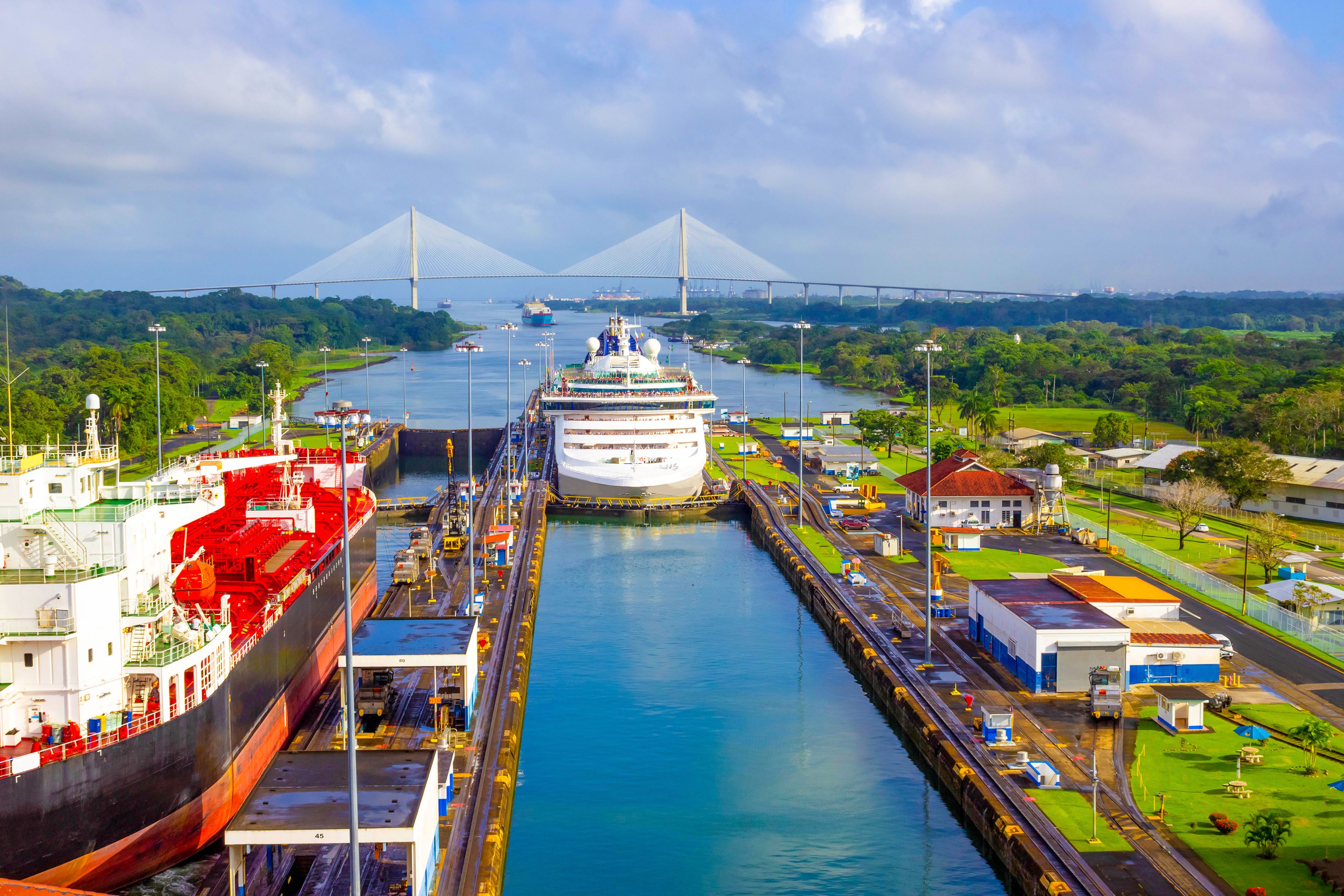
Following a 2023 full of drought-related disruption and delays, the Panama Canal Authority (PCA) has slowly been increasing the number of vessels permitted to transit through the central American passage since the start of the Red Sea crisis.
In its most recent update, the PCA said that the total number of ‘Panamax’ slots for smaller vessels will be increased from 17 to 20. The number of ‘Neopanamax’ slots for larger vessels remained 7, with the total daily slots available totalling 27.
This follows from a similar announcement in late December that numbers would be increased to 24 from January onwards.
To help traders understand and navigate the ongoing issues with the Panama Canal, the Daily Update spoke to Paula Bellamy, director at OL UK – an Institute of Export & International Trade (IOE&IT) silver supplier – to understand what the freight forwarding business is doing to support customers and traders.
Drought
In 2023, there were 14,080 total transits via the Canal, with ships going to 1,920 ports, and it remains one of the most used trading passages in the world.
Droughts caused by climate change caused the PCA to restrict the quantity and weight of ships passing through the canal.
Although this week’s news is welcome for freighters, Bellamy said many carriers were still facing a “choice”:
“Either they wait in line for days or weeks for their turn to pass through, they pay to jump the queue, or they travel round the tip of Africa and South America adding to the transit time.
“All goods are hit by these restrictions as the carriers face less capacity, more trips, higher costs and less efficient sailing.”
Many carriers, such as CMA and MSC, have previously announced surcharges for Panama-routed cargo, warns Bellamy, which could add to the cost pressures facing businesses.
Dry season
Additionally, despite the positive news from Panama, there is a risk that the ongoing dry season might cause the PCA to reverse its position.
In December, the authority had been set to further restrict the amount of traffic going through the canal, before unexpected rainfall boosted the canal.
“The Panama dry season typically starts in December and lasts until April or May,” said Bellamy, warning that the future weather changes might cause a rethink by the PCA.
It’s fundamentally a question of physics when it comes to the canal and the amount of water that it has, Bellamy adds:
“For the Panama Canal, if ships carried less cargo, then they wouldn’t sit so low in the water which solves the issue of the canal having less water.
“However, a vessel that isn’t maximised on capacity will not be as cost efficient as the carrier requires.”
Help for traders
OL’s major advantage is that it can use its status as an international freight forwarder to the benefit of customers.
“OL can help traders understand all options available to them with the different routings/airfreight options and any new land-bridge options that may be coming into the market which are trying to alleviate the issues.”
The idea of a ‘land-bridge’ – a solution that requires the goods to be unloaded and then transported via rail or road – has been mooted since the initial restrictions on use of the canal.
Other solutions
Bellamy says that other forms of transport, such as road, rail or air, can be good solutions to many customer needs, as can sourcing products from other countries:
“Longer transit times are the only other solution when going through the canal, so supply chain planning and additional financing is, unfortunately, otherwise inevitable.”
For more information on how OL UK can help with traders with their logistics or freight forwarding needs, or to see their resources on offer, please visit ol.uk.com.



